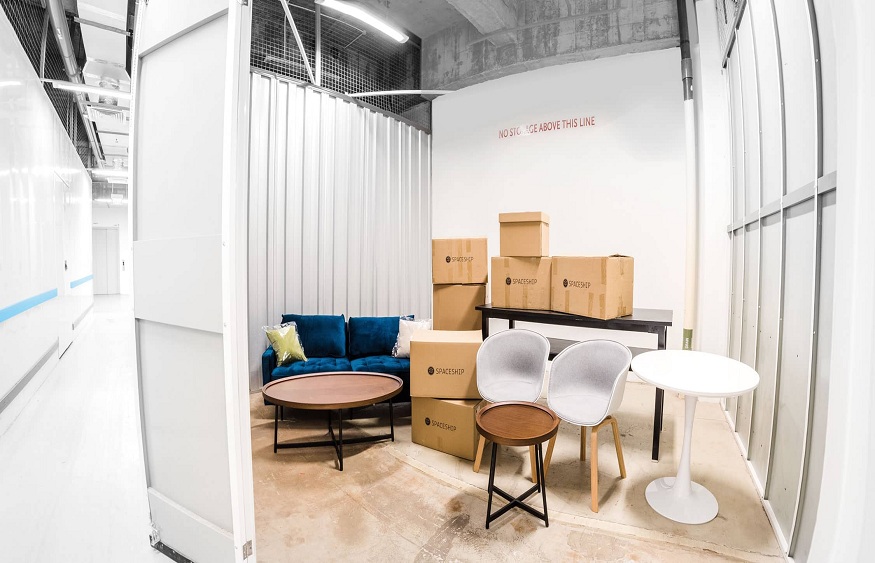In recent years, the world has witnessed a growing emphasis on sustainable living and environmentally friendly alternatives.
As a result, various industries have started adopting eco-friendly practices, including the furniture sector.
Cardboard furniture, with its unique blend of affordability, functionality, and sustainability, has gained popularity among consumers.
In this article, we explore the cost of cardboard furniture in Singapore, highlighting its benefits, pricing factors, and where to find affordable options.
Affordability and Sustainability
Cardboard furniture offers an affordable and sustainable solution for those seeking stylish and practical home furnishings.
Made from recycled cardboard, these pieces of furniture are lightweight, sturdy, and often customizable.
They not only reduce the demand for traditional wood-based furniture but also help divert waste from landfills.
Factors which determine how much does cardboard furniture cost in Singapore
Several factors influence the cost of cardboard furniture in Singapore. Here are some key considerations:
1. Size and Functionality
The size and functionality of the furniture piece also affect its cost. Larger items, such as beds or wardrobes, generally require more materials and effort to produce, making them relatively more expensive compared to smaller pieces like chairs or shelves.
2. Brand and Quality
Established brands often command higher prices due to their reputation, quality assurance, and investment in research and development.
However, emerging brands and local manufacturers may offer more competitive prices without compromising on quality.
3. Customization Options
Customization services, such as color choices, additional features, or personalized engravings, can increase the cost of cardboard furniture.
While customization adds uniqueness to your furniture, it is essential to consider its impact on the final price.
4. Design Complexity
The design complexity of cardboard furniture plays a significant role in determining its cost.
Intricate and intricate designs require more effort, time, and skill during the manufacturing process.
Designers and manufacturers often need to use advanced techniques to shape and assemble the cardboard, which can increase the overall cost of production.
Furniture pieces with simple and minimalistic designs, on the other hand, are generally more affordable due to their straightforward construction.
5. Material Quality
The quality of the cardboard used in furniture production is another factor that affects its cost.
Cardboard can vary in terms of strength, thickness, and durability. High-quality, heavy-duty cardboard is more expensive but offers enhanced structural integrity and longevity.
Furniture made from superior-grade cardboard is likely to last longer and withstand greater weight and usage, making it a worthwhile investment for buyers.
Cheaper alternatives might be suitable for temporary or lightweight usage, but they may not offer the same level of durability.
6. Manufacturing Technique
The manufacturing technique employed to create eco friendly cardboard furniture also influences its cost.
Various methods are used to transform cardboard sheets into functional furniture pieces, such as cutting, folding, bending, and laminating.
Some techniques require more labor-intensive processes and specialized equipment, which can drive up the manufacturing costs.
Additionally, if furniture pieces are customized or made-to-order, it often involves additional time and effort, resulting in higher prices.
7. Brand and Reputation
Brand reputation and recognition can significantly impact the cost of cardboard furniture. Established brands with a proven track record of quality and craftsmanship may command higher prices due to their brand equity.
These brands often invest in research and development, ensuring their eco-friendly products meet the highest standards in terms of design, material selection, and manufacturing techniques.
However, it’s worth noting that lesser-known or newer brands may offer comparable quality at a more affordable price, as they aim to establish themselves in the market.
8. Sustainability and Certification
Cardboard furniture’s eco-friendly nature is one of its main selling points. Some manufacturers may use recycled or sustainable cardboard materials, which can affect the cost.
Furniture made from recycled cardboard tends to be more expensive due to the additional steps required to process and refine the material.
Additionally, if the furniture carries certifications from recognized eco-labels or meets specific environmental sustainability standards, the cost may be higher due to compliance with stringent regulations and requirements.
9. Customization and Personalization
Customization and personalization options can impact the cost of cardboard furniture. If customers have the flexibility to choose specific dimensions, colors, patterns, or finishes, it often involves additional effort and resources on the part of the manufacturer.
Customized furniture may require special tools or techniques, which can increase production costs and, in turn, the final price.
10. Market Demand and Competition
The prevailing market demand and competition within the cardboard furniture industry can influence pricing.
If the demand for cardboard furniture is high and the supply is limited, prices may be higher due to the scarcity.
Conversely, in a competitive market with multiple manufacturers, prices may be more competitive as companies strive to attract customers through affordable pricing strategies.
12. Distribution and Retail Markup
The distribution and retail channels through which cardboard furniture is sold can affect its cost. Retailers may apply a markup to cover their operational costs, including storage, transportation, marketing, and overhead expenses.
Similarly, if the furniture is sold through specialized eco-friendly or sustainable furniture stores, the prices may be slightly higher to align with the store’s positioning and target market.
13. Economic Factors
Economic factors such as inflation, currency fluctuations, and production costs can indirectly impact the pricing of cardboard furniture.
If manufacturing costs, including raw materials, labor, or transportation, increase due to economic factors, it can result in higher prices for the end consumers.
Similarly, macroeconomic conditions and market trends can influence pricing strategies adopted by manufacturers to maintain profitability.
14. Warranty and After-Sales Service
The inclusion of warranties and after-sales service can contribute to the overall cost of cardboard furniture.
Manufacturers that provide longer warranty periods or comprehensive after-sales support may price their products higher to account for the additional expenses associated with these services.
This can provide customers with peace of mind knowing they have support in case of any issues or defects with the furniture.
Average Cost Range
The cost of cardboard furniture in Singapore can vary depending on the factors mentioned above.
On average, a simple cardboard chair can range from SGD 50 to SGD 150, while a basic shelf or small table may cost between SGD 80 and SGD 250.
Larger furniture pieces like beds or sofas could start from SGD 300 and go up to SGD 800, depending on their complexity and customization.
Finding Affordable Options:
1. Local Retailers and Online Marketplaces
Singapore has numerous retailers and online marketplaces that offer a wide range of cardboard furniture options.
By comparing prices and exploring different sellers, you can find affordable choices that suit your budget and preferences.
Some popular platforms include Lazada, Shopee, and local eco-friendly stores like Journey East.
2. DIY and Upcycling
For those seeking a more cost-effective solution, DIY cardboard furniture projects provide an opportunity to unleash creativity while saving money.
Numerous online tutorials and resources guide individuals in constructing their own cardboard furniture using readily available materials.
3. Secondhand and Rental Services
Consider exploring secondhand furniture stores or rental services that specialize in sustainable alternatives.
These platforms often offer lower-priced options for those who want to reduce their environmental impact without breaking the bank.
Conclusion
Cardboard furniture has emerged as an affordable, sustainable and eco-friendly alternative to traditional wooden or plastic options.
In Singapore, the cost of cardboard furniture depends on factors such as design complexity, size, brand, and customization.
By considering these factors and exploring various options through local retailers, online marketplaces, DIY projects, and secondhand stores, individuals can find eco friendly products that fit their budget.
Embracing cardboard furniture not only contributes to a greener lifestyle but also supports the ongoing global shift towards sustainability.





